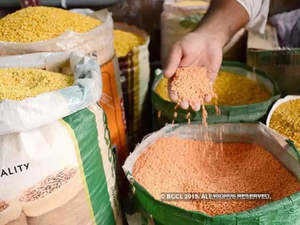 Agencies
Agencies
The government has estimated the output to be 8.23 million tonnes from the kharif, or summer-sown, crop, against 8.59 million tonnes the year before. The summer crop contributes 35-40% to India’s annual pulses production of around 25 million tonnes.
States have reported damage across 6.4 million hectares of total crops, out of which 4.7 million hectares fall mainly in pulses and oilseeds producing states such as Rajasthan, Maharashtra, Karnataka and Madhya Pradesh.
“We fear the damage in crop size could be to the extent of 10-12%. The focus is now on the rabi season, where planting has reached last year’s level. With conducive weather conditions, output is also likely to be close to last year’s rabi production,” said a senior agriculture department official, who did not wish to be named.
“But the shortfall in kharif is unlikely to be compensated,” he added. The government hoped to cut imports of pulses after three successive years of a good harvest, but dry weather at the start of this year’s monsoon and excessive rain toward the end damaged the crop.
“The area covered was almost at last year’s level of 13.6 million hectares. But flood and heavy rains washed away crops in Karnataka, Maharashtra, Rajasthan and Gujarat,” said the official. The official drive to boost pulses production started in 2016-17 after the country had to import the commodity in large quantities the previous year to meet local requirements.
The output jumped 50% to 23.13 million tonnes that year. “The trend continued while the output touched a record 25.42 mt in 2017-18, followed by 23.4 mt in 2018-19. All these years, the production was close to our annual domestic demand of around 25.4 mt. But this year, it is likely to slip due to lower kharif output,” said another official.
Download The Economic Times News App to get Daily Market Updates & Live Business News.
Subscribe to The Economic Times Prime and read the ET ePaper online.
Download The Economic Times News App to get Daily Market Updates & Live Business News.
Subscribe to The Economic Times Prime and read the ET ePaper online.









 Get Unlimited Access to The Economic Times
Get Unlimited Access to The Economic Times
